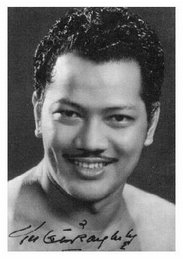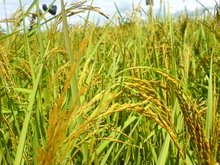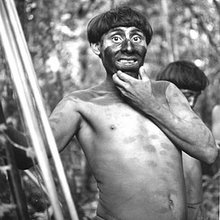PATTERN
As a koi grows, its pattern develops and grows with it. However, sometimes the pattern does not grow at the same rate asNot all koi have pattern, but where they do, the pattern should be well balanced across and along the body of the koi. It should be interesting and pleasing to the eye. 'Balanced' does mean that, say, patch of red scales on one side of the dorsal fin should be exactly balanced by a similar patch on the other side. It may be that a complimentary patch of another colour or of a different size is effectively placed. The same principle applies from head to tail. Too much colour at the head and too little at the tail end, or vice versa, will detract from the beauty of the fish.
As a koi grows, its pattern develops and grows with it. However, sometimes the pattern does not grow at the same rate asNot all koi have pattern, but where they do, the pattern should be well balanced across and along the body of the koi. It should be interesting and pleasing to the eye. 'Balanced' does mean that, say, patch of red scales on one side of the dorsal fin should be exactly balanced by a similar patch on the other side. It may be that a complimentary patch of another colour or of a different size is effectively placed. The same principle applies from head to tail. Too much colour at the head and too little at the tail end, or vice versa, will detract from the beauty of the fish.
As a koi grows, its pattern develops abd growa with it, However, sometimes the pattern dose not grow at the same rate as the base body colour. For example, if you are buying a small Kohaku (red on white), then the pattern should be 'heavier'. This larger proportion of red than white should result in a well-balanced pattern as it matures.
COLORATION
Whether a koi is patterned or not, its colour must be well established. When looked at closely, the colour should be 'deep' and 'even'. When colour 'thins' it is seen to go lighter. An example is the red on white of the Kohaku. A poor quality red will fade in places or look whiter than in the good areas. Colour can disappear; a Sanke become a Bekko, or a Kohaku a Shiromuji. This should not happen to a quality-bred koi, but it may occur if the fish is placed in poor water or experiences prolonged stress.
Colour can also be a distraction. Small spots of red or black, less than a scale in size, are known as 'shimis'. They can seriously detract from the beauty of a koi and disliked.
PATTERN EDGES
This another important aspect to consider. The edge produced where the scales of one colours overlaps those of another needs to be sharp. The effect observed when an underlying colour is seen through the overlapping scales is described as 'bleeding'. It is particularly noticeable at the leading edge of the coloured area. The Japanese terms for this effect are 'sashi' and 'kiwa' for the forward and rear edges respectively.
BLOODLINES
As you become knowledgeable about the hobby, so bloodlines assume a greater importance. They will ensure that you choose quality koi.
TATEGOI
Tategoi is the Japanese name given to a koi that they believe have not reached its full potential. They are sometimes referred to as 'unfinished' koi. As we have seen, koi pattern and quality can change. A young fish may not look very attractive, but when the bloodline is known to be good, it has the potential to improve. Even koi of 60cm or more can still be regarded as tategoi. It takes a trained and informed 'eye' to recognize the potential of these fish. Bringing tategoi to their full potential requires great skill and knowledge on the part of the keeper. it is important to note that if a tategoi is placed into poor quality water, its potential to improve will be greatly reduced.
CHOOSING A HEALTHY FISH
Any fish you intend to buy should be healthy. The sign to look for are clear, well-set eyes and no wounds, discoloration or bruising. All the fins must be present complete and clean. Look for a straight back and an absence of any lumps or bulges from the flanks. These may be due to unlaid eggs or a sign of something more serious.
Observe the koi swimming, breathing and feeding; erratic or exaggerated movement of the body or gills may indicate the presence of parasites. If a koi hangs about or does not feed, return to the dealer a couple weeks later to check on it once more before making a decision.
WHEN TO BUY KOI
In japan, harvesting koi from the filed ponds tales place in October and November. Dealer from around the world visit Japan to view and buy the pick of the newly harvested stock. Shortly afterwards, the chosen fish will start arriving back at the dealers' premises and be put on display for hobbyist to see the best koi that the dealer has to offer. However, most dealers have stock delivered to them all year round, so you can visit them at any time.
When you are choosing your koi, remember that competition fist must conform more tightly to the criteria outlined above. On the other hand, koi that find pleasing will be equally attractive in the garden pond. Assess the capability of the pond to house new addition and do not buy too many fish at the same time. The filter will need time to adapt to the extra stock loading, with consequent water quality reduction.
It is good practice to place a new fish in an adequate quarantine system for a few weeks before introducing it to the main koi pond. Prepare the quarantine pond to receive new fish some weeks in advance of the buying trip.
until then
















No comments:
Post a Comment